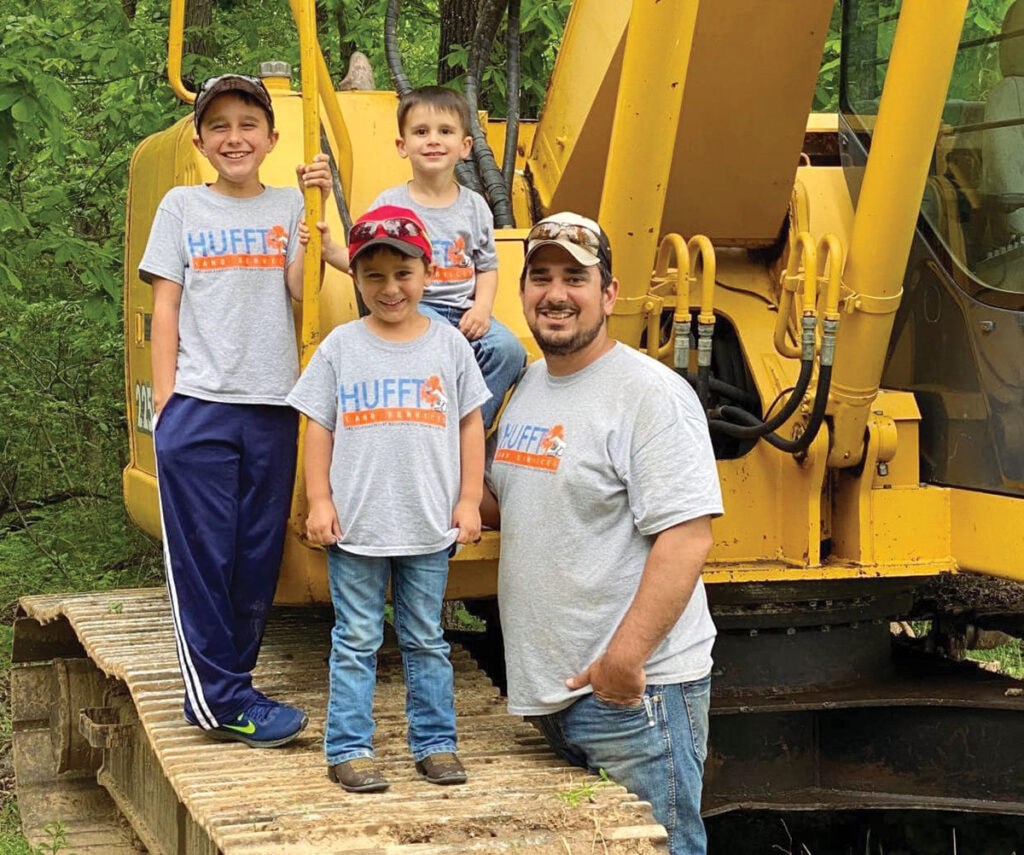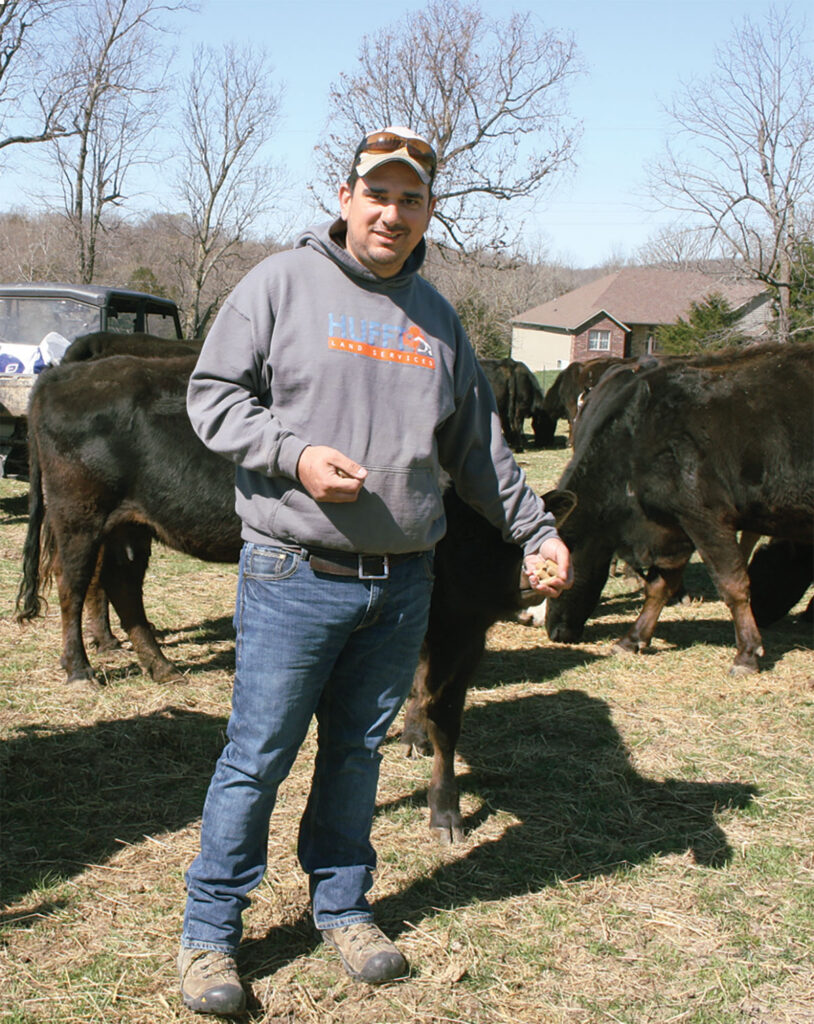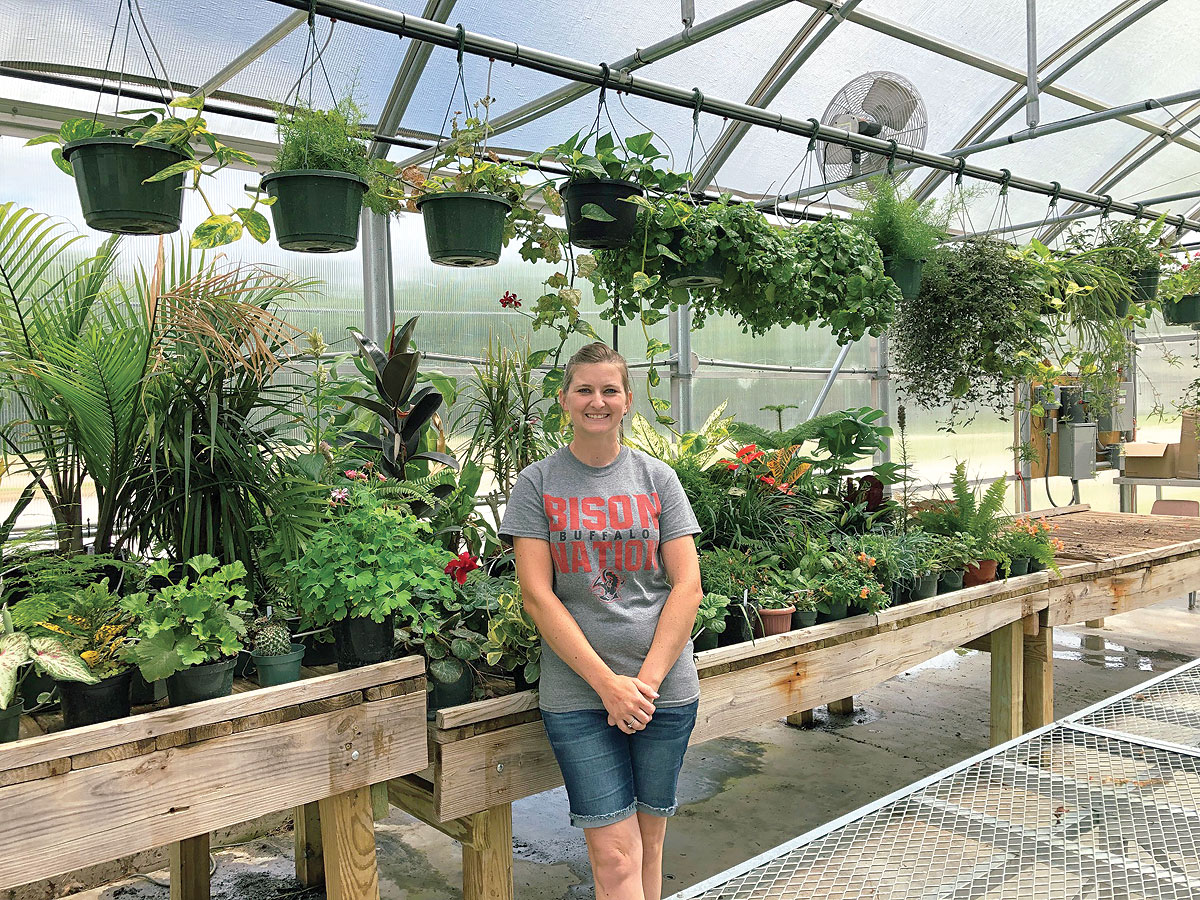
Charles Hufft sees value in the maternal traits of Gelbvieh
When he started running out of pastureland, Charles Hufft decided it was time to move his commercial cattle operation to a registered herd, focusing on high-quality females.
The Hufft herd consists of 90 mostly registered Gelbvieh and Balancer females.
“We went to the registered side because we want to make more per animal,” Charles said, adding that most of the commercial herd is being phased out. “We went with Gelbvieh because of their docility. We have three young boys, and it’s nice to have a cow that will let you tag her calf, weigh it, then give it back to her. We have one rule, and I don’t care what the EPDs are or what she looks like on paper; if a cow throws her head up, she goes to town. I’m a huge believer in docile cows raise better calves.”
Charles and his family, including wife Anna and sons Case (9), Gage (5) and Tripp (4), live near Willard, Mo., and run cattle on about 370 owned and leased acres, with another 200 acres for hay production. Charles partners with his father-in-law Bill Buckler in the farming operation.

“Bill is a blessing,” Charles said, adding that he did not grow up on a farm, but he loved working with cattle at his grandparents’ farm. “He grew up on a farm, showed cattle, raised Shorthorns, and as he got closer to retiring from his job, we decided to push the cattle a little more and acquire a little more land. Bill does about 95 percent of the work. I think he’s busier now than he was before he retired.”
The calm disposition of the Gelbvieh breed is not the only trait Charles and Bill have come to appreciate.
“They are fabulous milkers and have a ton of maternal instincts,” Charles said. “We have guys who will buy heifers and breed them to a SimAngus, Charolais or go back to black, and they produce good calves. A lot of guys are starting to see when you have a Gelbvieh momma, you have something that will milk and milk hard. They also have high carcass traits. We have brought in an Angus bull to get those Balancer calves to up that carcass value. Feedlot guys love calves with a little Gelbvieh because they know they are ready to grow. The commercial guy is still in the business of selling pounds. When people come to buy a heifer, they are looking at her now and her future production. At the end of that cow’s life, she has more than paid for herself.”
Generations of females raised on the same farm, Charles said, give prospective buyers an idea of what they are investing in. “We can show them the whole package,” Charles said. “If someone is buying a heifer off of a 5-, 6-year-old cow, they can see how that heifer will perform in the future.”
Black and red Gelbvieh make up the Hufft herd, but Bill and Charles are leaning more toward focusing on red genetics.
“I just like red and the dark red ones,” Charles said. “We are still 90 percent black, but the bulls we have been running have been red and black. Out of the heifers, if we have an equal quality red heifer and black heifer and can only keep one, we’re going to keep the red one.”
Bulls produced by the Hufft herd are sold to a buyer at weaning.
“I don’t want to market bulls,” Charles said. “For us, we want to breed for that maternal female, that long-term cow that will stay on our farm for 12, 14 years, or go to another farm for 12, 14 years. We want to breed that female that will produce year after year with the correct genotype and phenotype.
“Everyone wants that AI-sired bull; they want the big-money bull. We just bought two powerful bulls, good-looking animals, but I’m not a fan of fat cattle. I’m a fan of cattle that work. I want those mommas that can flesh up easily on grass and retain their body condition even if they are nursing a 600-pound calf. We’re getting there, but it takes time. Sometimes it takes culling that cow that might not get culled on another farm, but on mine, she needs to go. We want to sell top-quality replacement heifers, and if they don’t meet the cut, they are shipped to the yard as feeder heifers. There’s nothing wrong with those heifers, but if you’re trying to better a breed and increase profitability, you want to raise those cows that will breed back like clockwork and raise a calf.”
Cattle receive mineral supplements, and some grain is offered if the grass is short.

“In the cold months and when they are nursing heavy, they get about 2 pounds a day,” Charles said. “We try to keep quality hay in front of them, and our farms are all pretty heavy in clover. We fertilize pastures and hayfields each year to get them that quality forage.”
Cereal grains, typically cereal rye, are drilled each fall, and Charles said they have good luck with turnips and rape.
“In some of those fields get grazed down a little too much, we will mix in some orchardgrass or an endophyte-free fescue,” he added. “We have good luck with crabgrass. It’s kind of the poor man’s warm-season grass, but the cows love it. These farms are all still a work in progress. We still have about 40-plus acres that we are going to turn into pasture.”
Calves are allowed into a creep pen leading up to weaning, which is at about 205 days.
“They only get 2, 2 1/2 pounds a day,” Charles explained. “We still hand feed them every day in the creep pen, and we can make the pen bigger and have three of four troughs, so even the smallest calf can get in there. We don’t get those four or five calves that block the feeder and get as fat as toads.”
The Hufft herd is split into spring and fall calving seasons.
“We do that so we don’t have to run as many bulls, and the calving is easier,” Charles explained. “Also, if we have a first-calf heifer that doesn’t breed right back, we can give her that second chance and not wait a year. If she doesn’t breed back that second time, then she is gone. I expect our older cows to breed like clockwork, and if they don’t stay in their group, then we have the vet out to check and see if there is an indicator of why it’s not happening. They have to produce every year because they still eat, even if they aren’t bred.”
Due to time constraints, Charles and Bill have not utilized AI recently, relying on their herd sires.
“Ideally, we would like to AI 15 to 20 percent in the spring and fall,” Charles said. “We have bought better quality natural-service sires. For the heifer market, guys don’t seem too concerned about having AI-sired calves. They want good-quality mommas.”
Heifer buyers are a mix of registered breeders and commercial producers.
“Our commercial guys are looking for that pen of uniform heifers,” Charles said. “For our registered guys, it’s those guys who need a couple of good heifers. We could move a lot of heifers at the stockyards, but we don’t have to.”
EPDs are more critical to some of his fellow breeders, but Charles wants to see a cow and decide if she’s what he’s looking for.
“If they don’t look right, then they aren’t right for us,” Charles said.
While clearing his own property, Charles, who previously owned a chemical and supply company, realized how many other landowners faced the same dilemma he does, thus giving birth to Hufft Lane Services.
“My original plan was to work by myself, 10 days a month, and help other guys get their pastures cleaned up,” Charles said. “We have built ponds, roads and clearing. We don’t build fences, but we clear a lot of space for fences.”
“It’s turned into much more than I ever thought it would,” Charles said, adding that he likes trees, but those trees should be beneficial to the agriculture operation.
Ironically, the land clearing service has also lead Charles partnering with Ryan Roberts Hardwood Ridge Pellet Company in Bolivar, Mo., in the production of kiln-dried oak pellets for pellet stoves as a way to reduce waste created from the sawmill industry.
Charles may have several irons in the fire, but his ultimate goal is to leave a legacy for his sons, a legacy in agriculture.
“The plan is to launch them and help them get started with their own farms,” Charles said. “If they don’t want it, that’s fine; they can sell it. It’s a long-term deal for us. Even though we farm, my wife and I still have our regular jobs and businesses to provide for our family. We get to do with the boys, and hopefully, it’s something they latch onto.”






